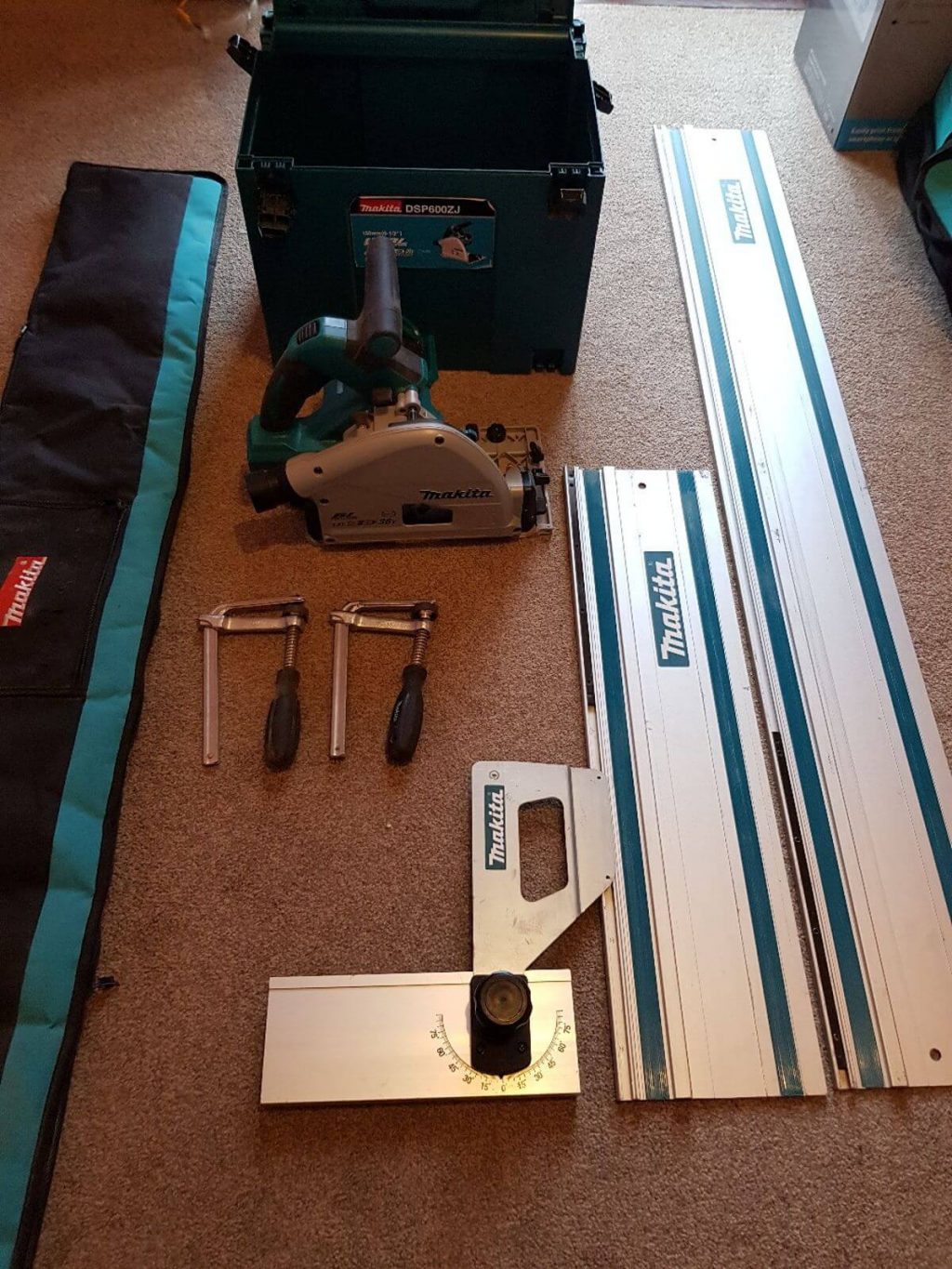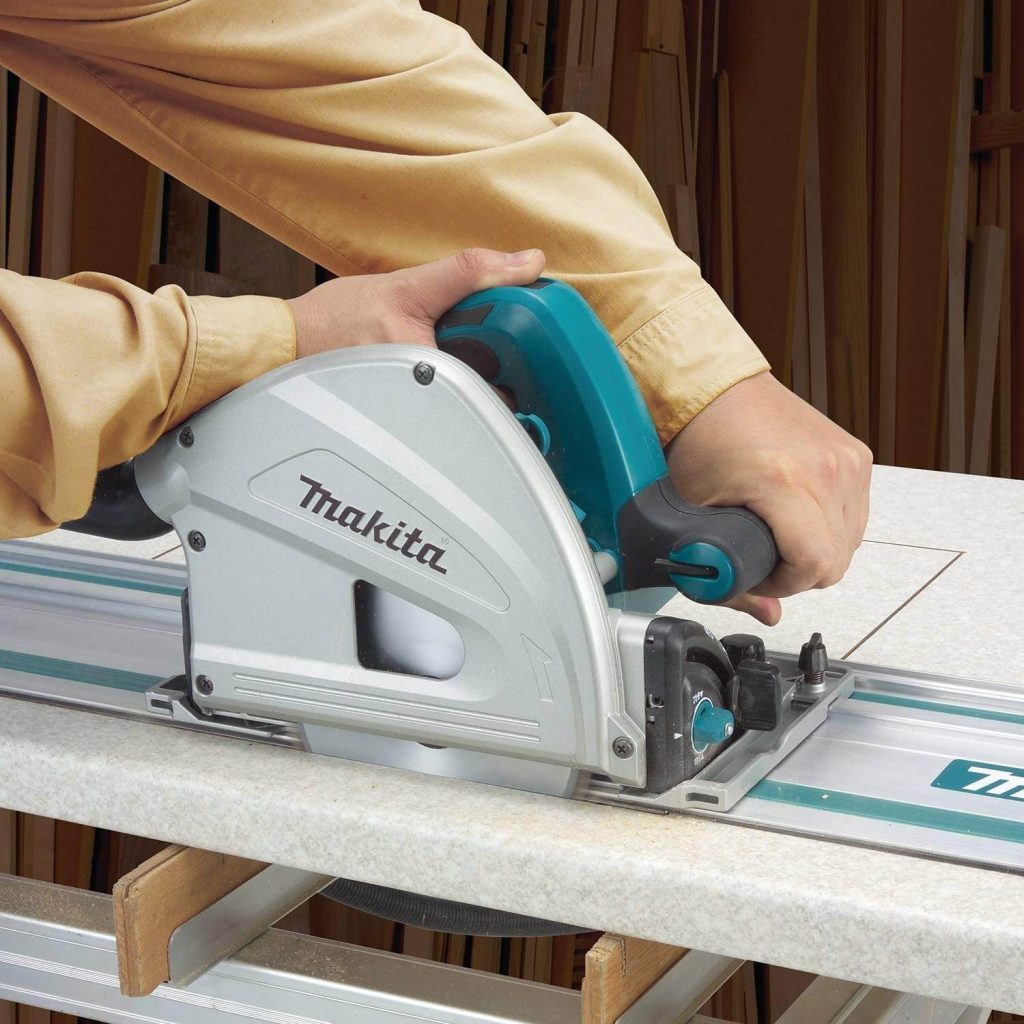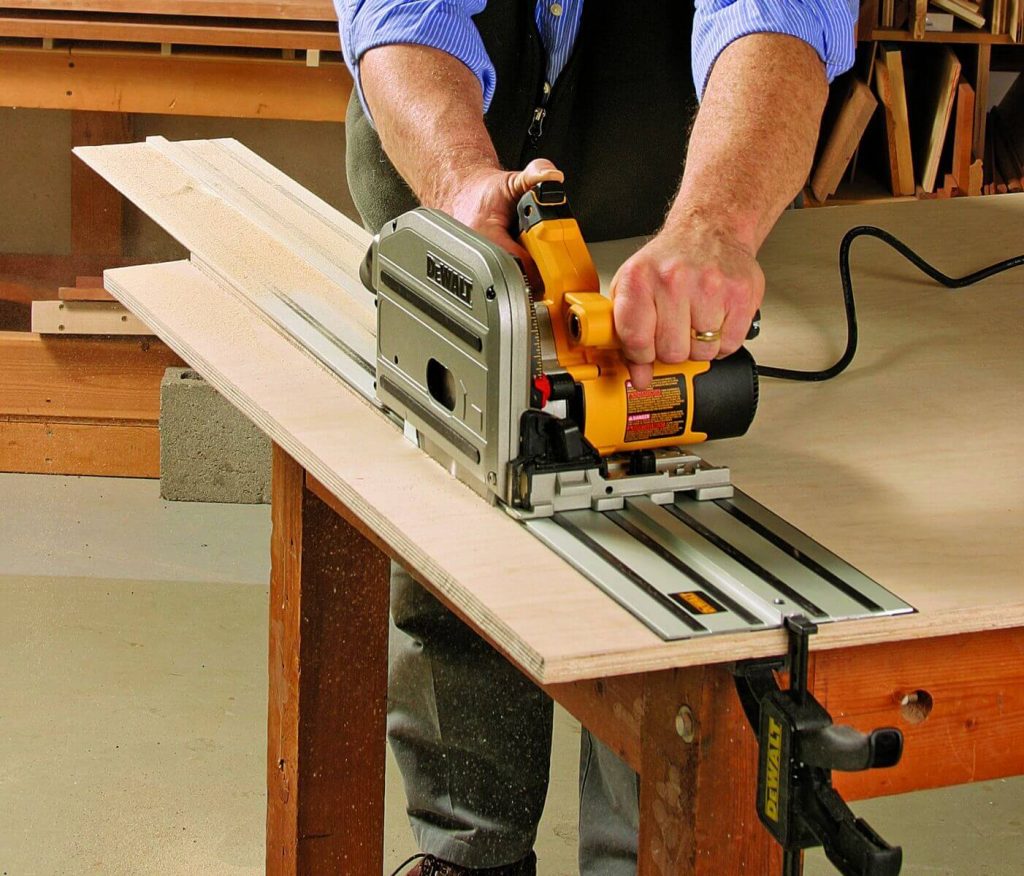Introduction
Have you ever wanted to cut a piece of wood or another piece of material along a straight line? Bundle this together with a long workpiece and you will quickly come to notice that it is not an easy feat to perform. Working with power tools is a tad difficult and requires a good amount of skill and composure. While trying to cut, you will notice that a straight line is not so easy to follow even though it is mapped on the workpiece. The vibration and kickback could and will throw you off course if you do not have the experience of working with these tools. Introducing a track or a guide rail to your saw make this a much lighter task with higher precision in the finished product. A tool that incorporates this guide rail is the track saw.
What is a track saw?
A track saw is a super effective handheld power tool that allows one to cut material along a straight line. A powerful electric motor runs the spinning blades that cut wooden boards of all sizes. It is paired with a metal straight edge track ( mostly made of aluminum) on which the saw follows to produce super-accurate straight line cuts. In a simpler analogy, think of it as a circular saw which has a metal track to follow. It also goes by the name a plunge-cut saw or a plunge saw.
What follows next is a detailed guide on track saw, but before that, you should familiarize yourself with the types of material the saw can handle to avoid any damage to the blade. These materials include wood and melamine and you shouldn’t cut materials made of metal.

Step 1
The first step is to set the track. The track has a high friction tape at the back which makes it stable in operation even without clamping.
Step 2
There is a flexible metal strip that mildly extends from the track and just makes contact with the blade while cutting ( this is the line of cut indicator). Position this strip along the line you want to cut.
Note: You don’t have to take into consideration the dimensions of the saw base as you would on a conventional saw and straight edge.
Step 3
Adjust the depth setting of the blade in relation to the thickness of the material you’re going to cut so that the blade just clears the material underneath.
Step 4
Push on the safety located right above the handle and place the saw on top of the track to follow.
Step 5
Plunge the saw into the material and since it is on the truck it will follow the rail and cut along the predetermined route. Always keep in mind the length of the power cord while cutting.

Uses of a track saw
This power tool has a good number of uses.
●They are used to make accurate straight line cuts on a long piece of material.
● Since they are portable and light, they can be carried to the workpiece and not the workpiece to the machinery which makes it quite effective.
●The guide rail can be set at any angle and cut making it versatile in the types of projects it can handle.
● The cutting blade too can be adjusted to cut at set angles on the piece of wood(say 45°). This makes it easy when adjoining other workpieces.
●Since the blades are not exposed, it can be placed at any point on top of the workpiece and a plunge cut can be made.
●It saves time on setting up and cutting of material due to its precision.
● It can be used to cut large wooden blocks down to manageable sizes, all while reducing the number of chips.

FAQs
Yes you can. Since the saw and the track are not conjoined at any point before the cutting operation, the saw can operate independently. But when the saw plunges down you must be extra careful to be sure where it lands to avoid imperfect work. It will be a hassle to try and cut straight lines without a track, and for this reason, it is advisable to use it.
Though both saws use a circular-type saw, the main difference between a circular saw and a track saw is that a track saw comes with guide rail it follows while a circular saw doesn’t. It should also be noted that a track saw plunges it’s cutting tool while a circular saw stays in place. The track saw also has a built-in chip collection system which makes for neat work and fewer chips compared to the circular saw.
This is a borderline yes. Yes because it will be governed by the nature of work you are handling. A track saw can’t handle rip cuts as well as a table saw. You should also note that you can cut identical pieces of wood on the table saw by setting the fence width and blade height, but when using a track saw you have to lay down the straightedge every time.
Depending on the power of the motor, size of the blades, and the amount of technology used, a track saw can range anywhere from $250 to over $1000 for a top-of-the-range model.

Conclusion
A track saw is a truly state-of-the-art invention which has totally transformed the woodwork industry. Its ease-of-use, portability, accuracy, and versatility have seen it overpower its predecessors and made it a more desired work tool to have on the bench. It is a tool that every woodworker should aspire to have on the ready due to its numerous advantages.
Read more:-

